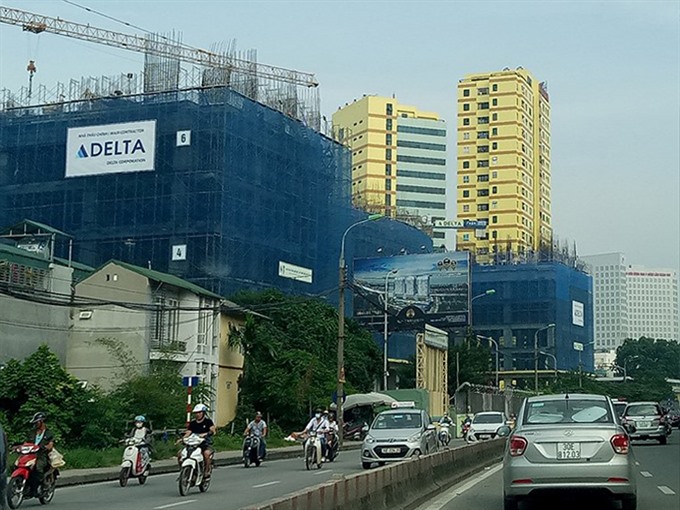 Society
Society

Deputy Minister of Construction Lê Quang Hùng said 2017 has been a breakthrough year for the construction industry as it has met or surpassed almost all development targets.
 |
| A residential quarter under construction on Nguyễn Khoái Road in Hà Nội. An expert believes that last year was a breakthrough year for the construction industry. — VNS Photo Thái Hà |
HÀ NỘI — Deputy Minister of Construction Lê Quang Hùng said 2017 has been a breakthrough year for the construction industry as it has met or surpassed almost all development targets.
He was addressing a conference to review 2017 and set out new goals for 2018, with the attendance of Prime Minister Nguyễn Xuân Phúc.
Hùng said in 2017 the industry witnessed a relatively high growth rate of 8.7 per cent.
It contributed 0.54 per cent to the nation’s overall GDP growth rate of 6.81 per cent, ranking third among all industries in terms of contributions to GDP.
The country’s urbanisation rate reached 37.5 per cent last year, increasing by 0.9 per cent year on year. The country currently has 813 urban areas, 11 more than in 2016.
A report by the ministry said that last year, the average floor area per person increased by 0.6 sq.m compared to 2016, to reach 23.4 sq.m per person.
A further 190,000 sq.m of social housing was added in urban areas, lifting the total area of social housing in urban areas to 3.49 million sq.m. About 220,000 accommodations for students were put into use.
A total of 3,077 real estate projects are being implemented with investment capital of VNĐ3.3 quadrillion (US$144.9 billion), covering nearly 78,000 ha.
Of these, about 300 projects are big projects, each of which has total investment of over VNĐ3 trillion and provide over 1,500 apartments.
On tourism property, as of July 2017, there were 77 projects providing 16,437 hotel rooms, 11,174 villas and 12,056 condotels developed or being developed.
Without revealing the number of condotels which had been sold to secondary investors, the deputy minister warned about the “hot” development of this type of property.
"The supply of condotels has been abundant and more measures are needed to control it in the future," Hùng said.
Hùng said some shortcomings had still not been solved during the past year, including rampant construction violations, which in some cases kept occurring even after punishments were handed out.
The structure of products in the real estate market was still a problem, with an abundance of high-end apartments and deficiency of low-cost housing.
He also admitted the slow pace of renewing old apartment buildings.
Currently there are about 2,500 old apartment buildings nationwide, most of which were built before 1994. Of these, 600 buildings have seriously deteriorated and pose dangers to residents.
The implementation of some social housing programmes shared the same fate due to the ending of the VNĐ30 trillion housing stimulus package, while the capital allocated to support social housing projects in the 2016-2020 mid-term public investment plan was not much.
In 2018, the ministry will implement a project to conduct assessment and forecasting work, based on which it would propose solutions and policies to ensure the healthy and stable development of the real estate market.
The ministry will also work to devise a project on economic security in the housing and real estate market to ensure social welfare and complete a database on the housing and real estate market.
Another major goal will be cooperating with related ministries and agencies to solve difficulties in State budget allocation to effectively implement major housing projects.
Looking to the coming year, Prime Minister Phúc demanded the construction authorities decisively carry out solutions, aiming to achieve an annual growth rate of 9.2 per cent.
“The ministry should increase the proportion of private investment, especially to encourage the public private partnership (PPP) model in order to utilise sufficient resources as well as improve the constructions’ quality,” Phúc said. — VNS




